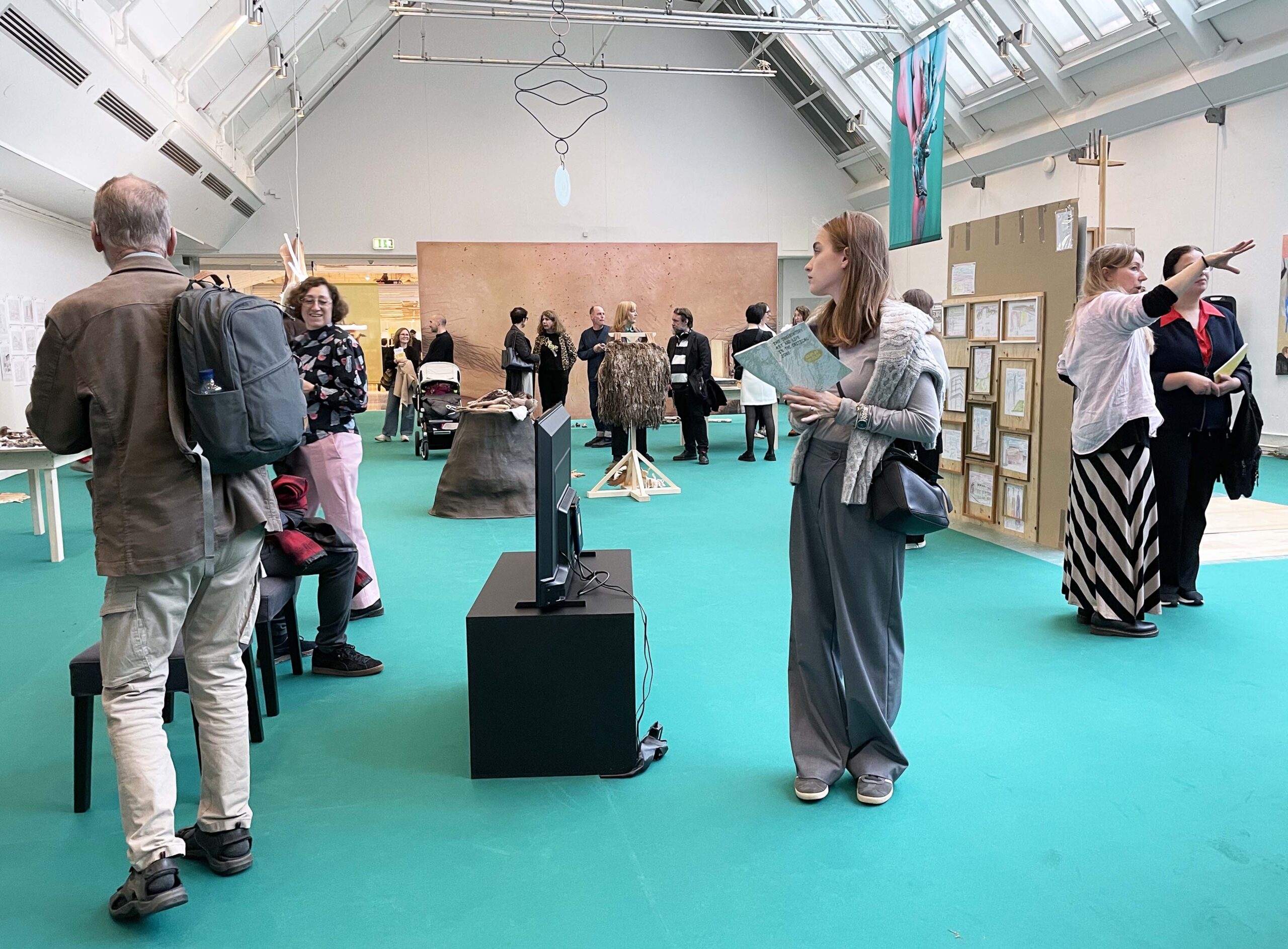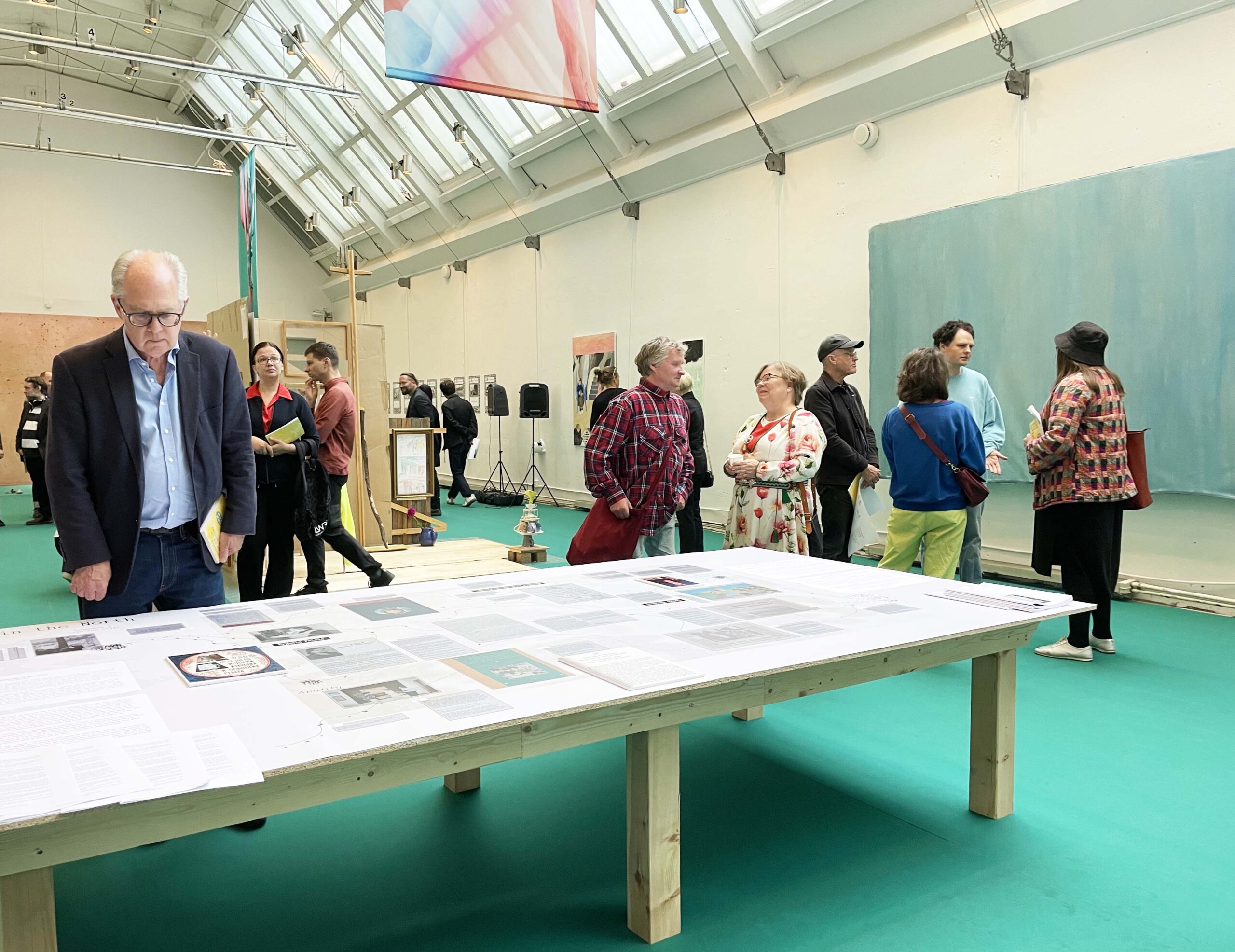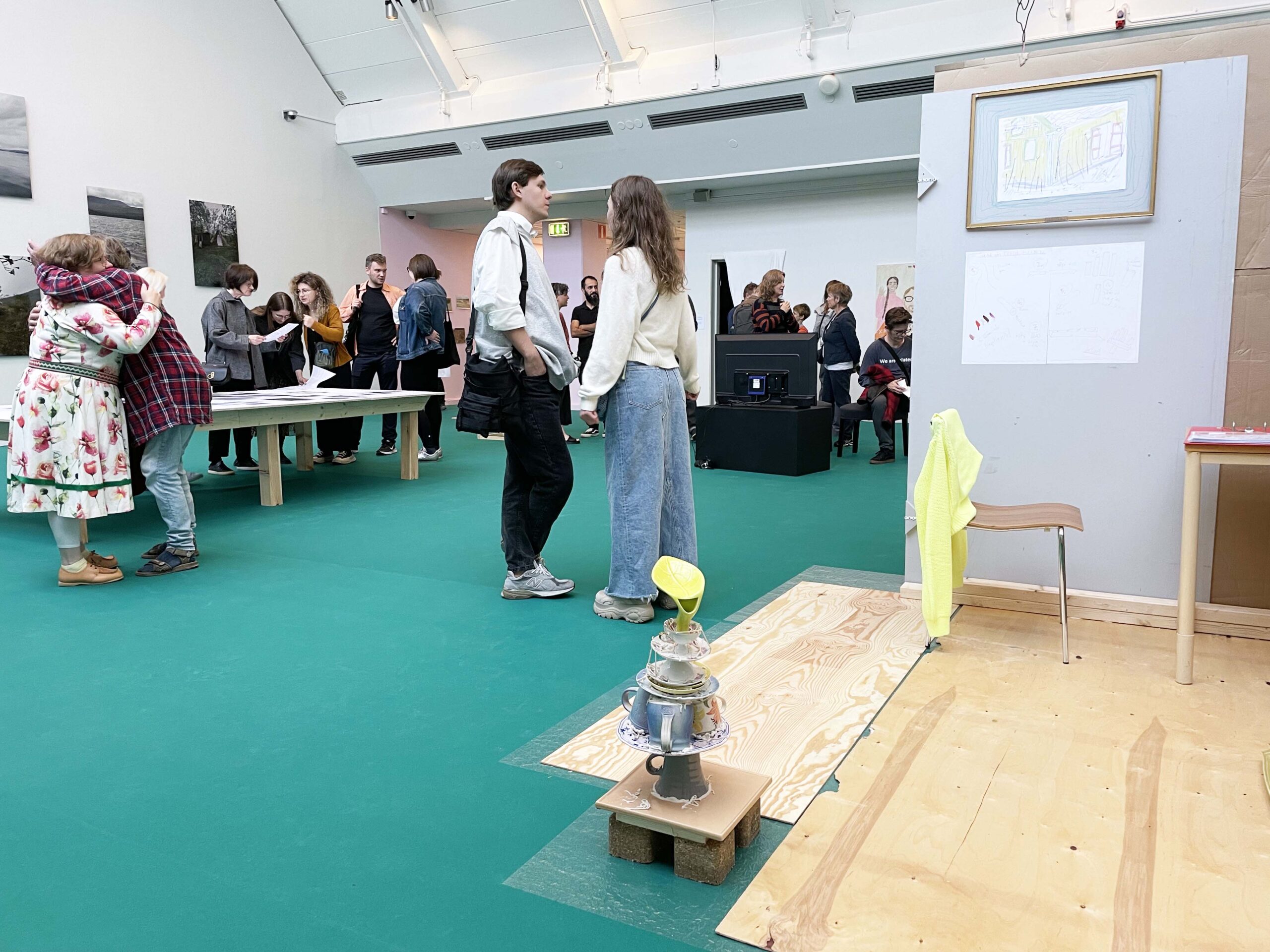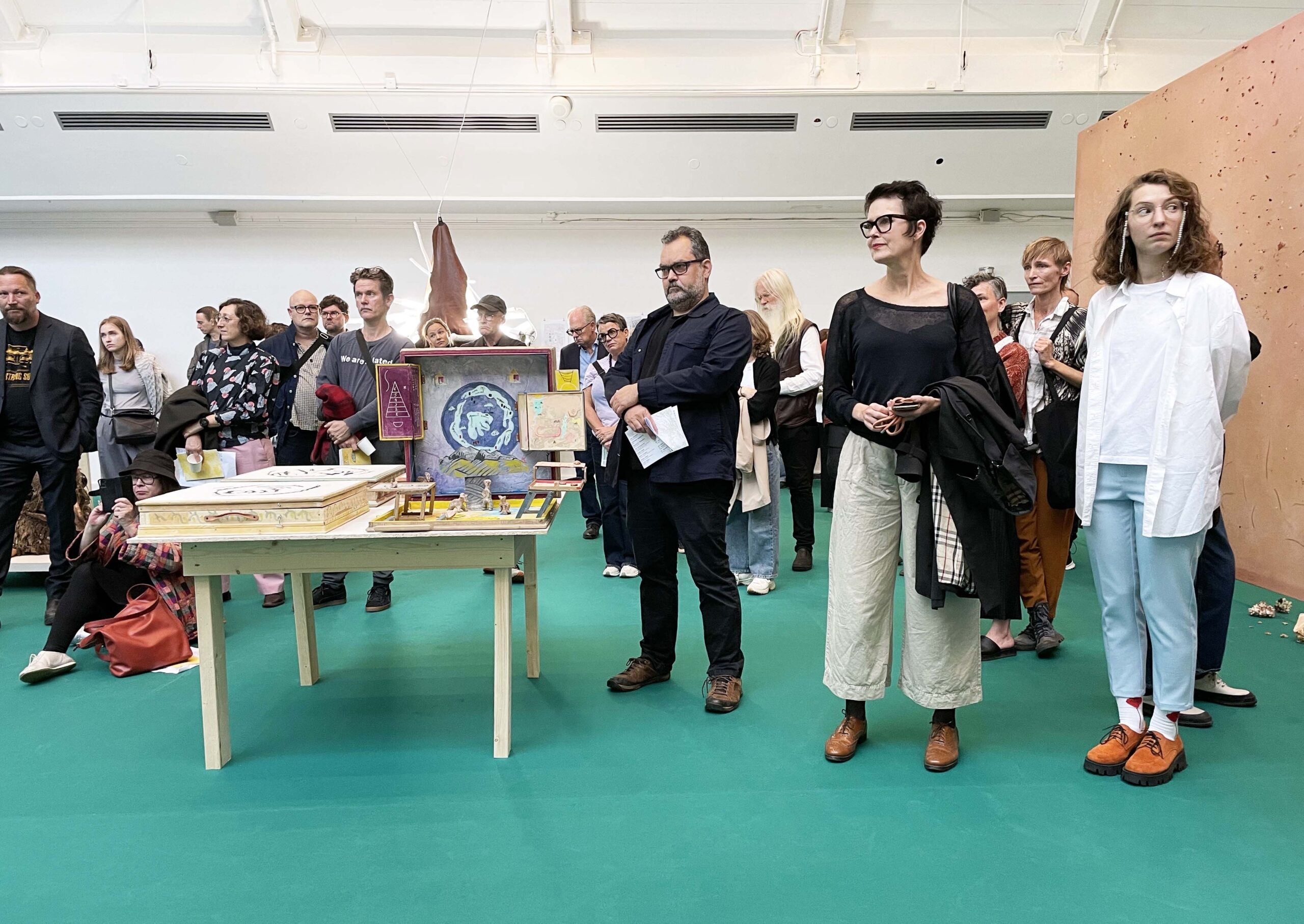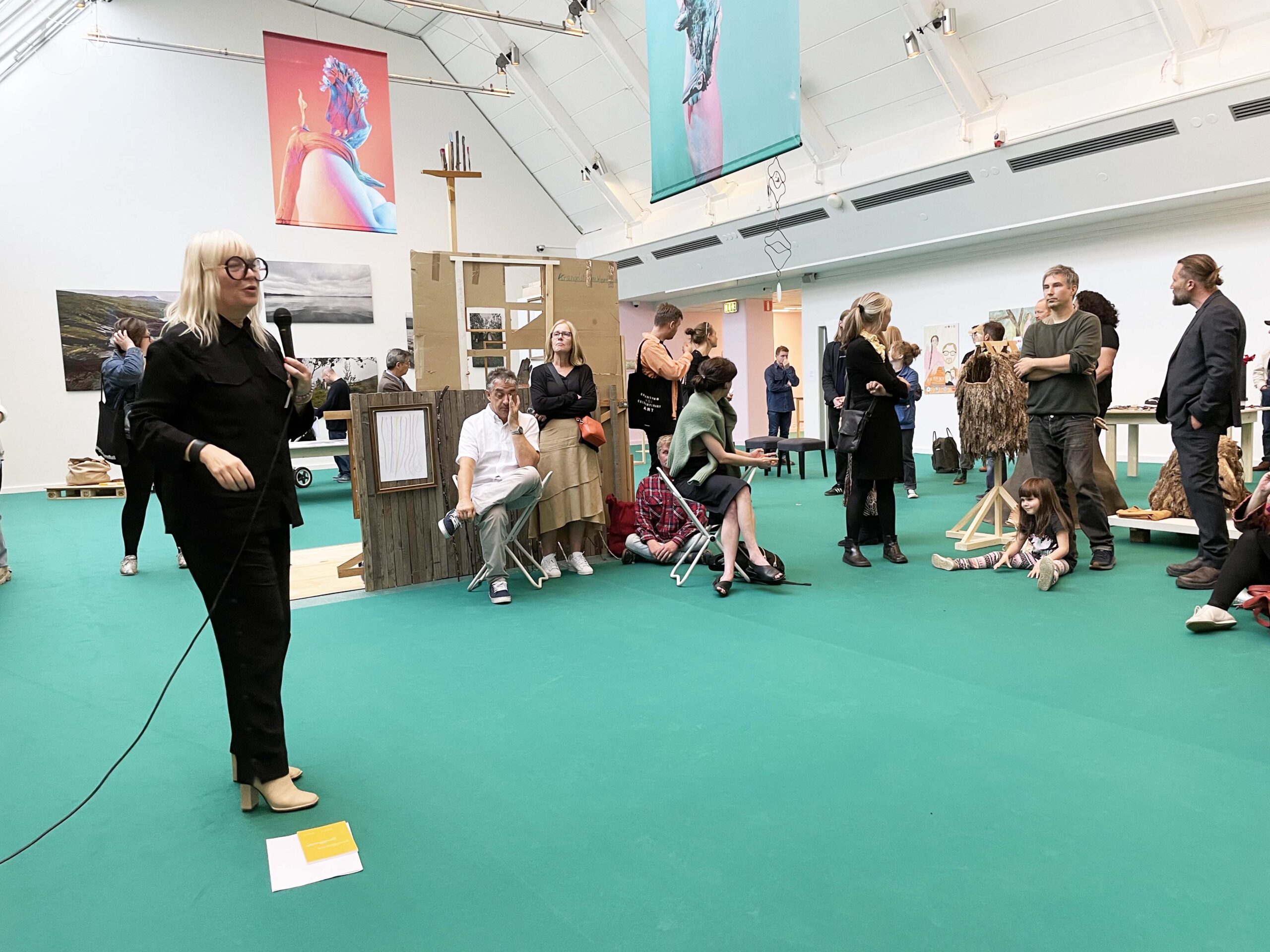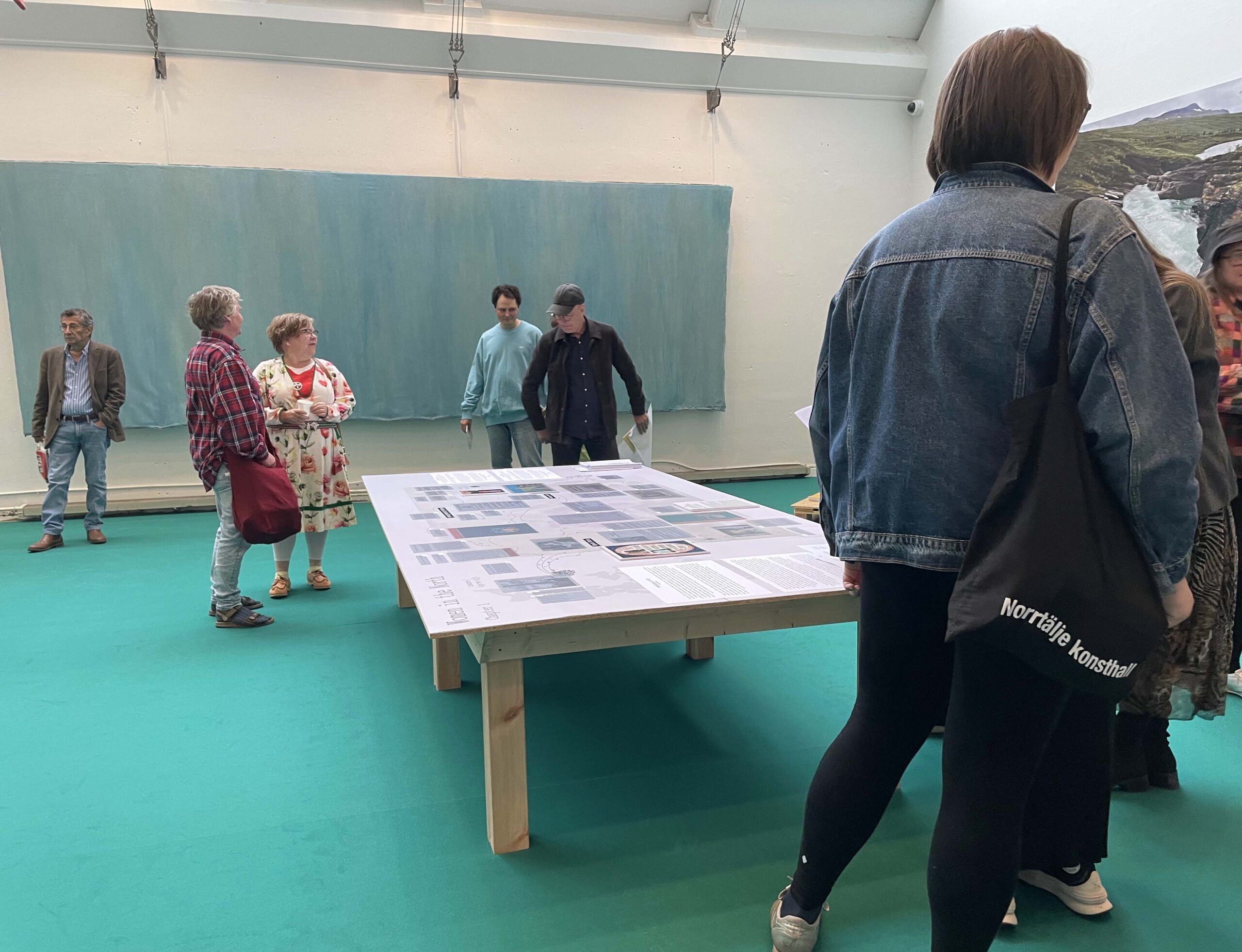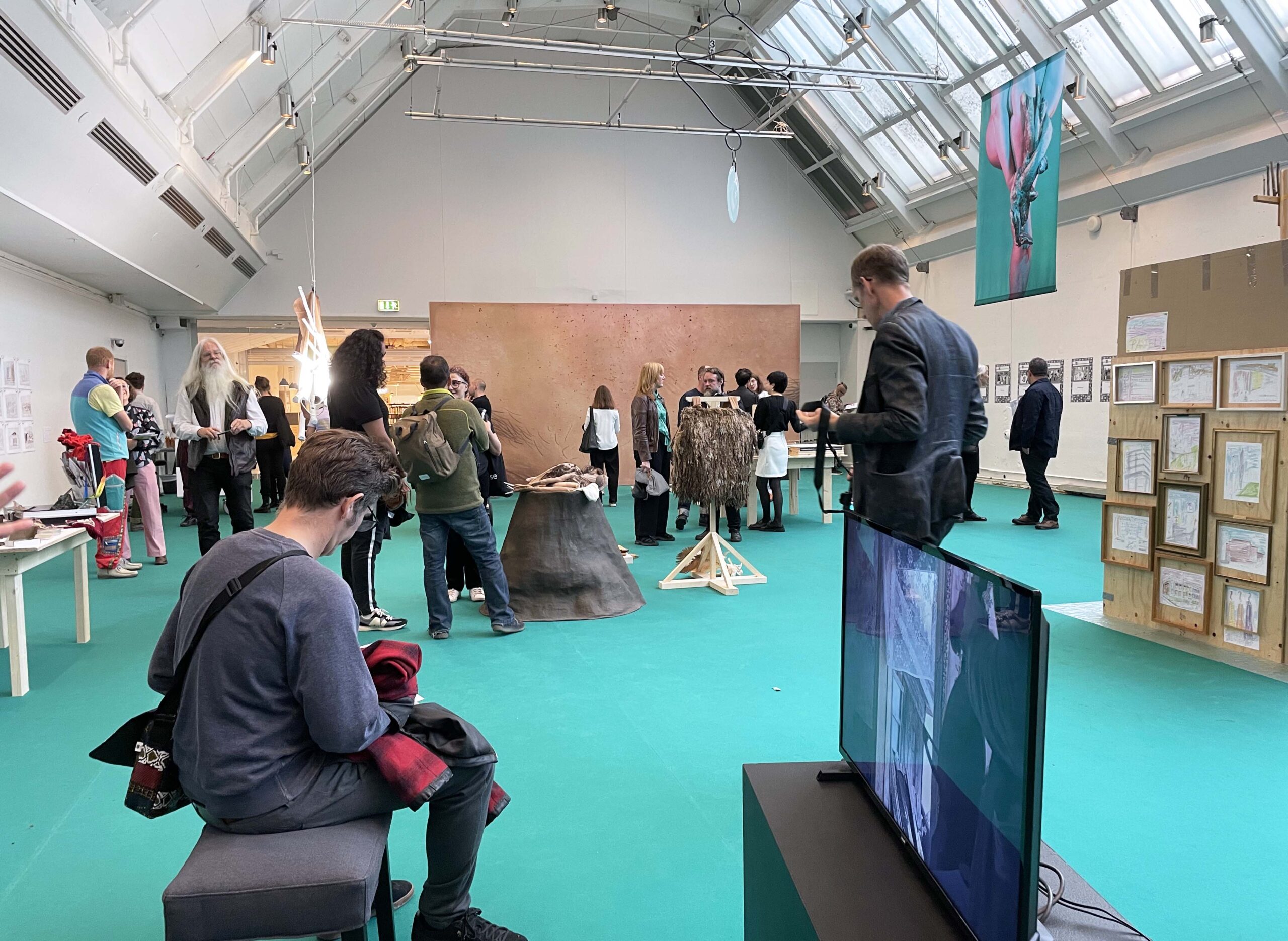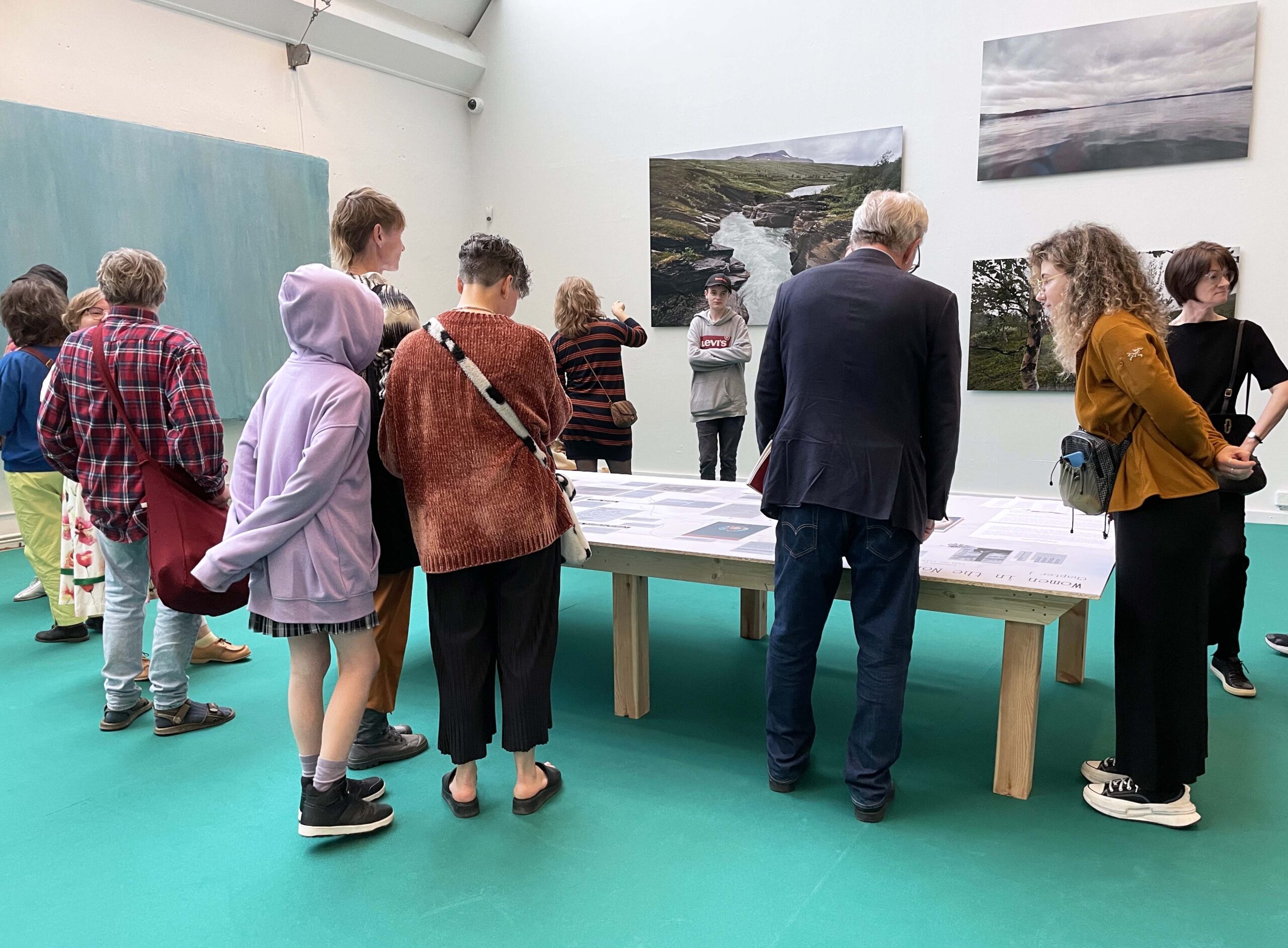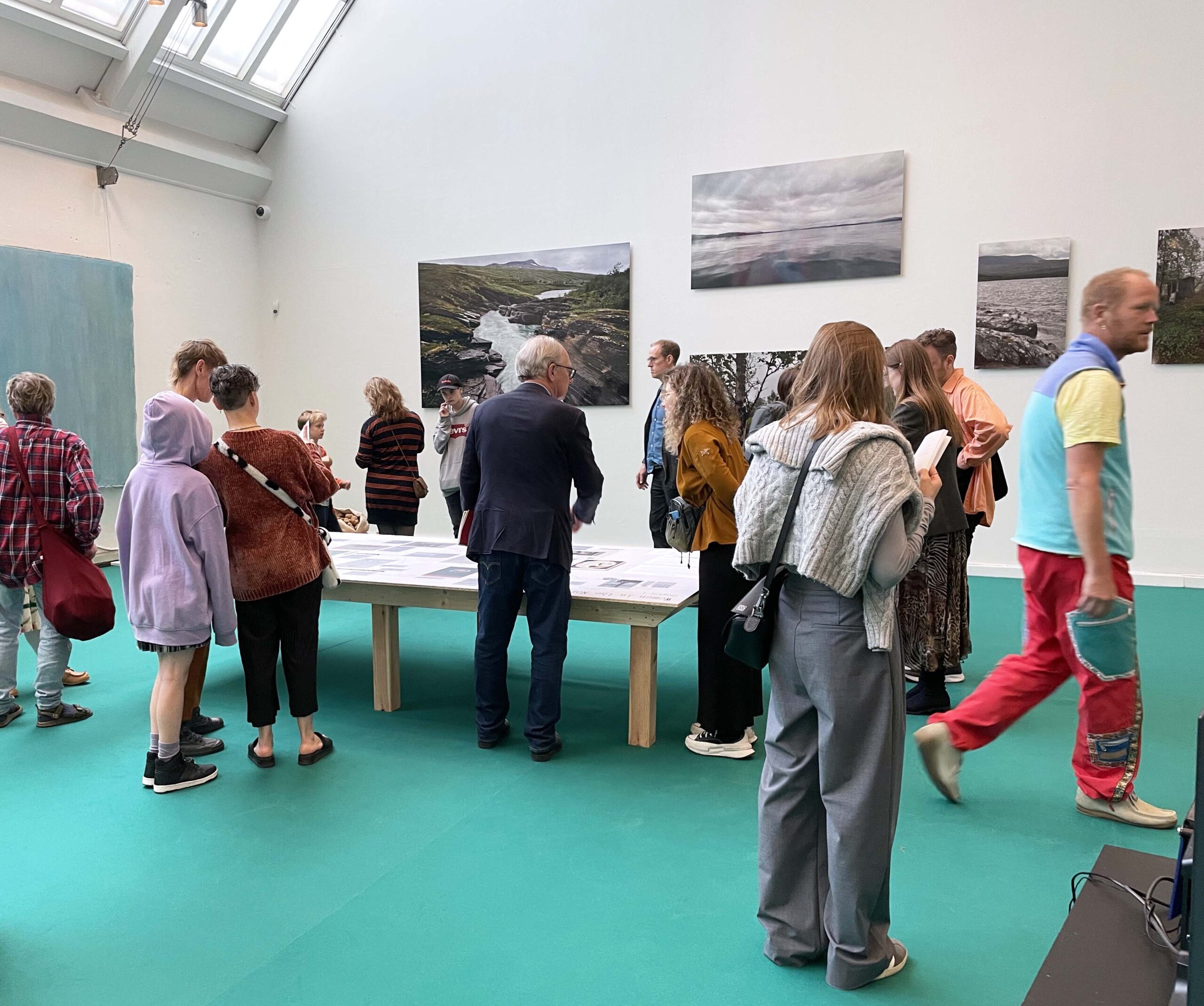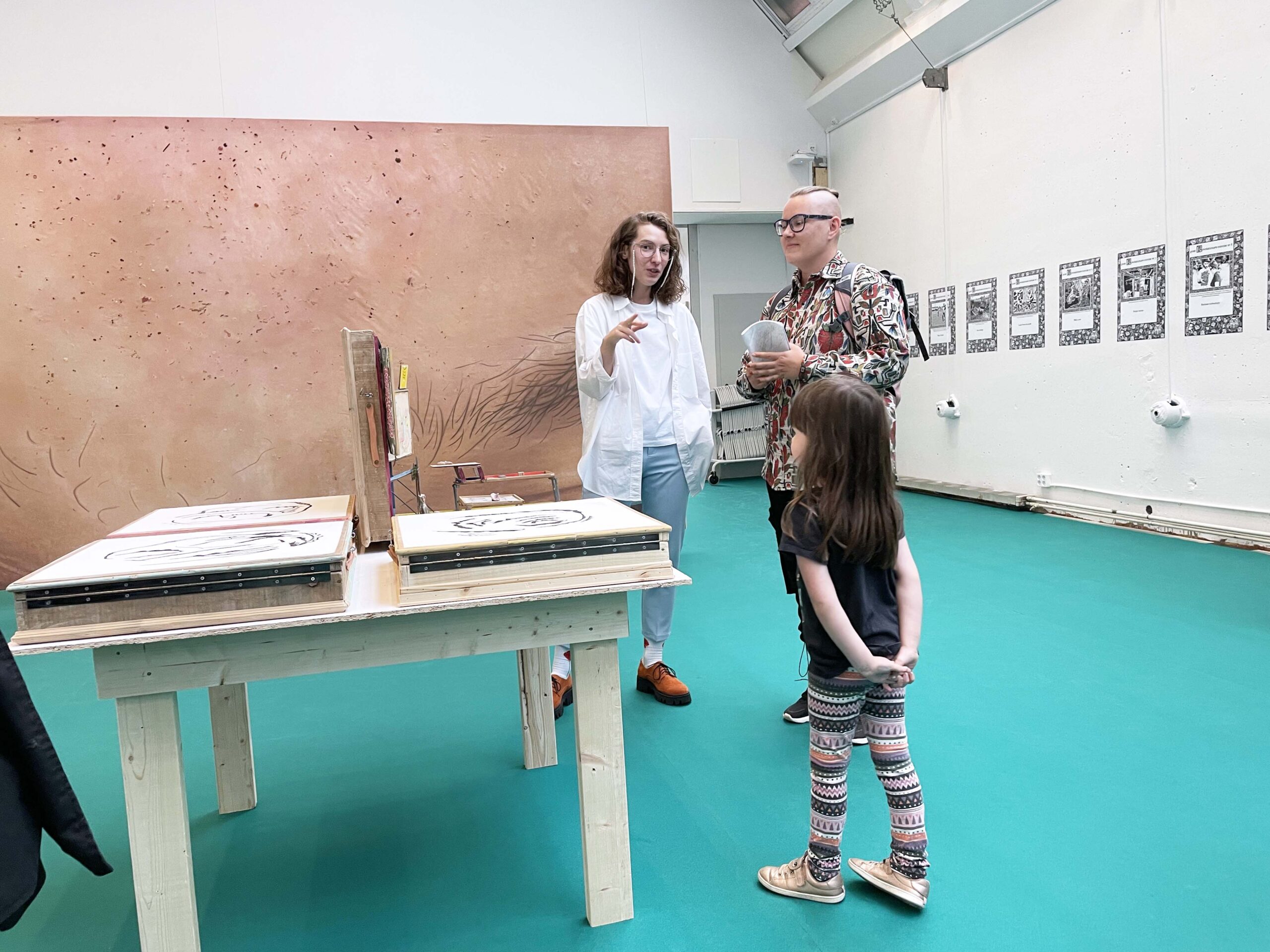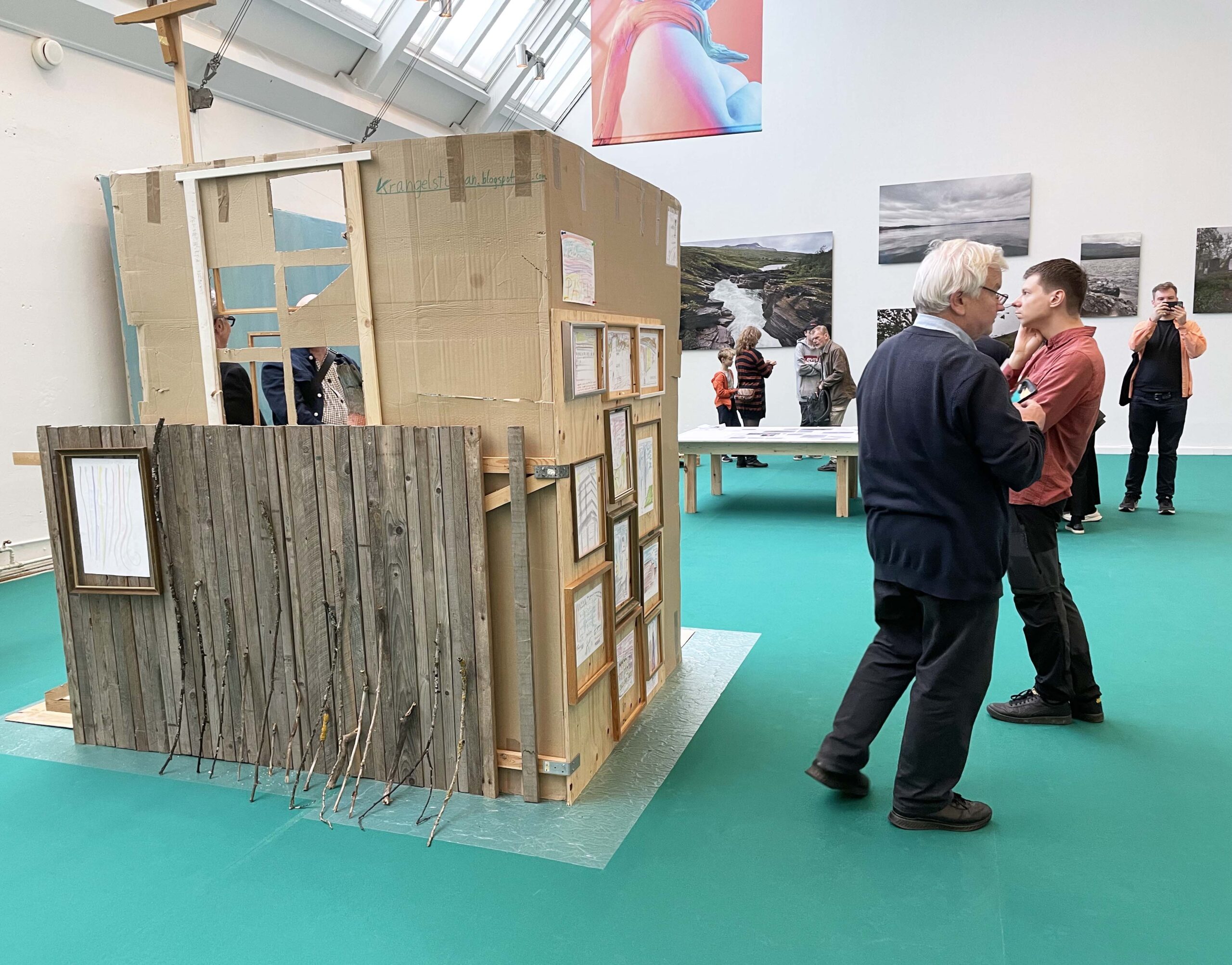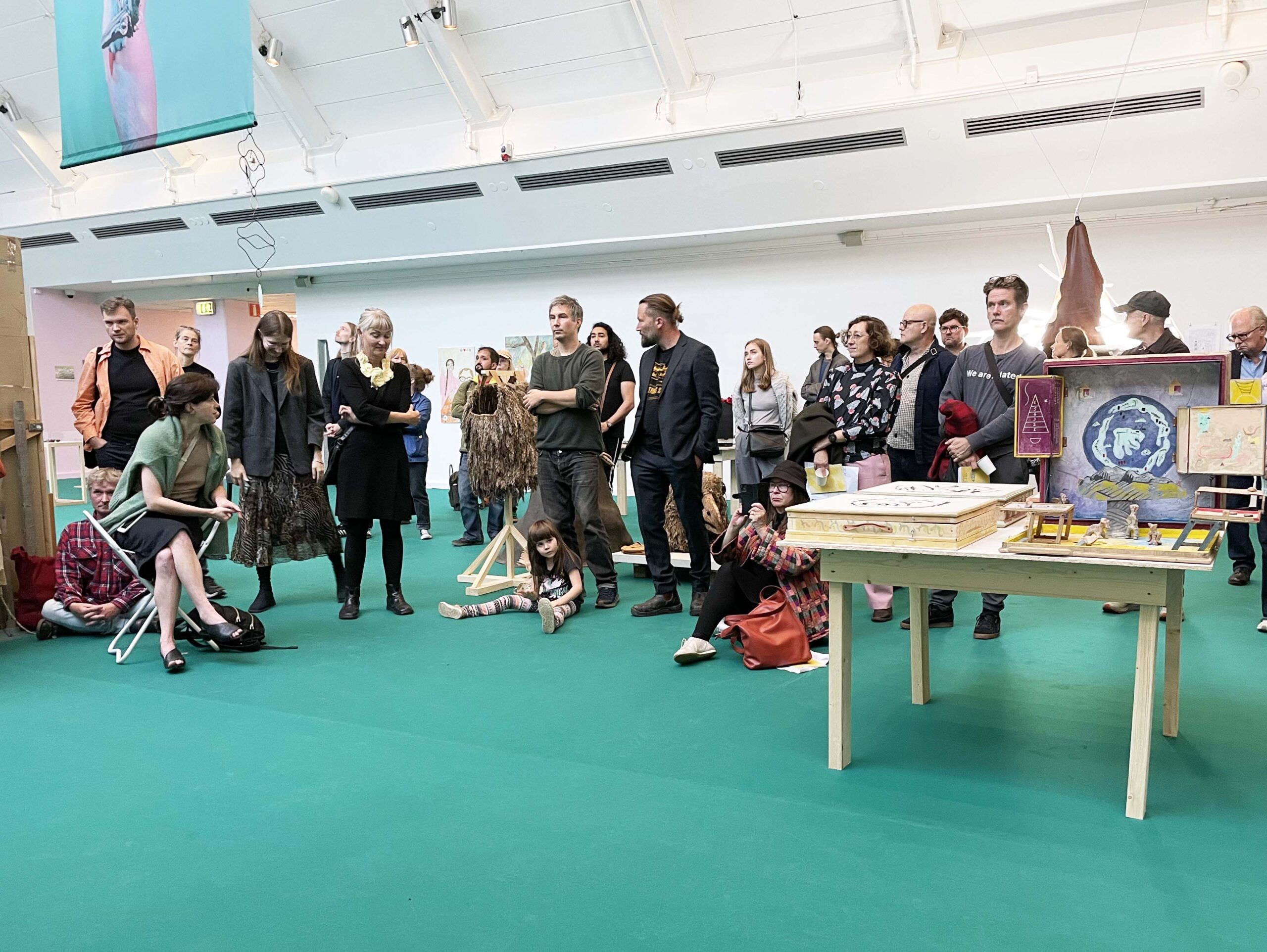
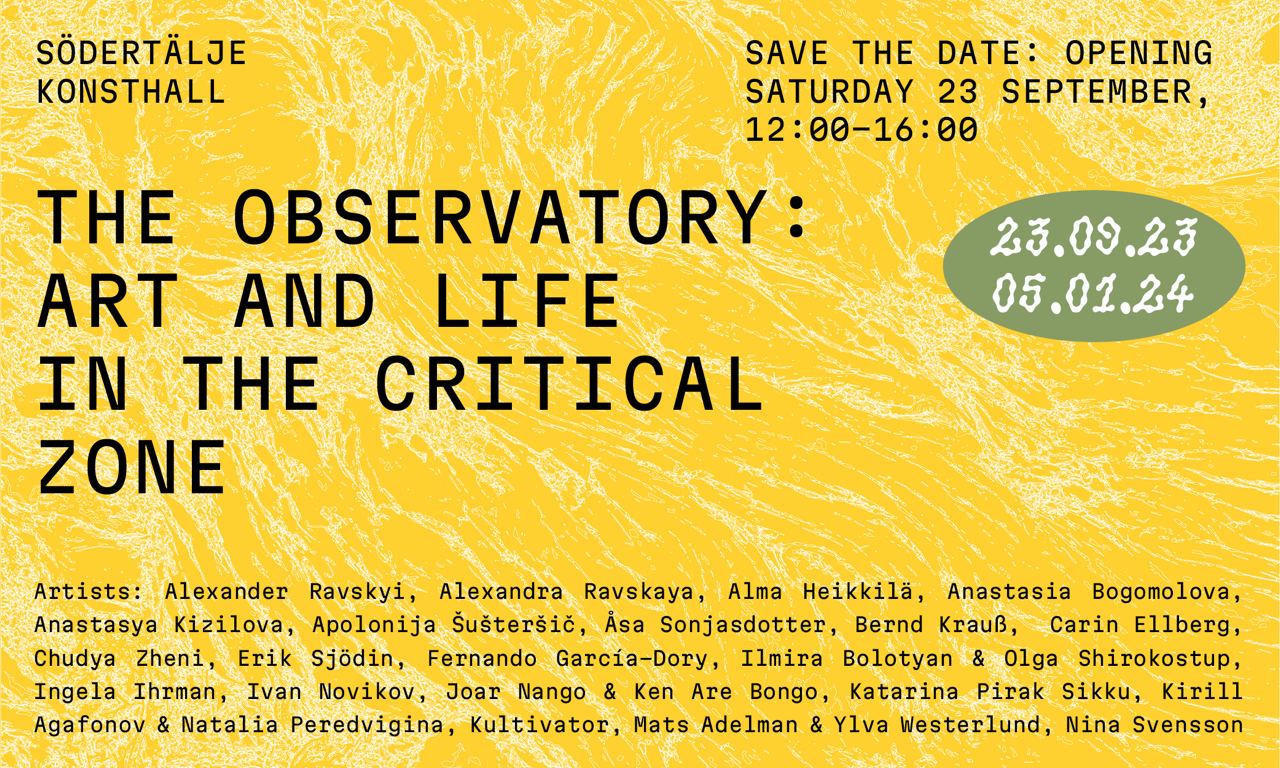

Participating artists: Alexander Ravskyi, Alexandra Ravskaya, Alma Heikkilä, Anastasia Bogomolova, Anastasya Kizilova, Apolonija Šušteršič, Åsa Sonjasdotter, Bernd Krauß, Carin Ellberg, Chudya Zheni, Erik Sjödin, Fernando García-Dory, Ilmira Bolotyan and Olga Shirokostup, Ingela Ihrman, Ivan Novikov, Joar Nango and Ken Are Bongo, Katarina Pirak Sikku, Kirill Agafonov and Natalia Peredvigina, Kultivator, Mats Adelman and Ylva Westerlund, Nina Svensson.
Works by: Anastasya Kizilova and Apolonija Šušteršič (in collaboration with Sylve Rolandsson), takes place in the garden at Saltskog Gård, Förvaltarvägen 53.
THE OBSERVATORY: ART AND LIFE IN THE CRITICAL ZONE revolves around the intricate relationships among humans, animals, plants, earth material, and other forms of life. The exhibition brings together a collection of new and existing artworks by twenty-six artists who, in diverse ways, actively engage with the multifaceted elements present in the “critical zone.” These elements encompass a wide range, spanning from earthworms and oil birds to imagined beach creatures and resilient potatoes, from indigenous landscapes and micro-territories to rainwater and archives of rural-based alternative communities across Europe and West Asia. The artists have employed painting, drawing, video, sculpture, performance, workshops, agriculture, and other means of expression, which will co-exist in a dynamic display at Södertälje konsthall.
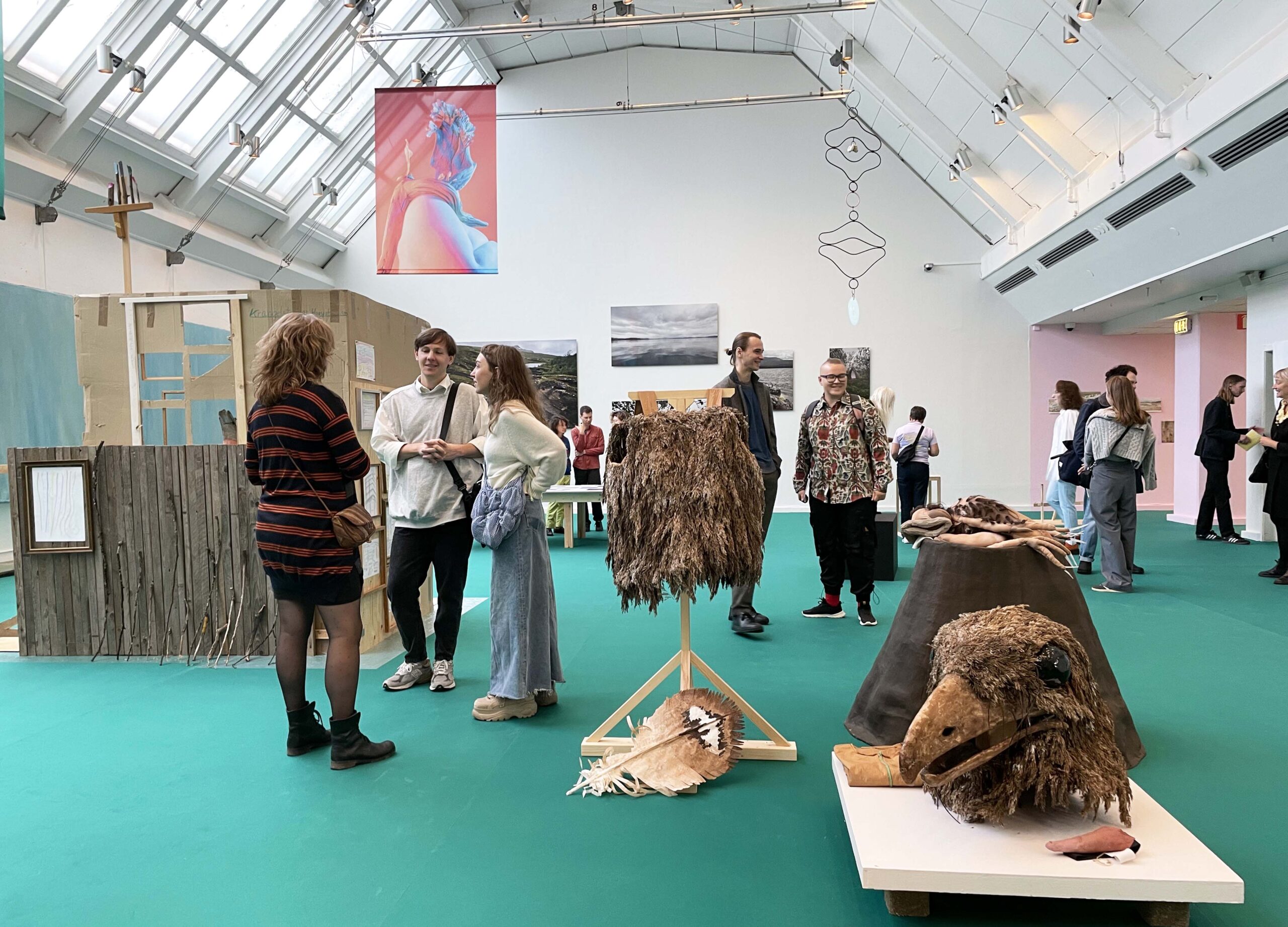
As a term, “the critical zone” was coined in the early 2000s by earth scientists in order to grapple with the heterogeneous, near surface environment in which complex interactions involving rock, soil, water, air, and living organisms regulate the natural habitat and determine the availability of life-sustaining resources. Instead of thinking in terms of nature and culture, and a dichotomy between the two, geoscientists, hydrologists, micro-biologists, and pedologists developed this integrative approach to overcome the divide between disciplines and methodologies.
Acknowledging the urgency of the rampant climate crisis, they not only created a new term but also a new methodology: the critical zone is predicated on the notion that the interconnections of all entities within the zone are inescapable. Something which indigenous people, among others, have known and practiced all along. Another objective of the earth scientists in coining the term was to disrupt the discourse on the planet’s dire circumstances, aiming to foster a new approach to earthly politics necessitated by the ecological crisis.
With the aim of facilitating this kind of integrated research within chemical, physical, and biological processes, critical zone observatories were established. The observatories are research stations with different aims, located in Austria, the Czech Republic, Greece, Peru, the United States, as well as other places. Within the critical zone laboratories, the previously established top-down cartographic depiction of the Earth from the Holocene geological era is undergoing disintegration. As it happens, this is the moment when we are entering a new geological epoch, the Anthropocene. For the first time ever, human activity has a significant impact on the climate and the eco-systems, something which is highly palpable in the critical zone.
THE OBSERVATORY: ART AND LIFE IN THE CRITICAL ZONE is not unlike such observatories belonging to the critical zone: the exhibition gathers heterogeneous art works, which nevertheless all pertain to what is going on within the critical zone. If the observatories try to overcome the incongruity between lab results and field data, between a range of individual disciplines usually kept apart, the exhibition attempts at allowing seemingly disparate art works to influence each other within and outside the exhibition space at Södertälje konsthall.
Like the research in the critical zone observatories, the art works/cosmograms in the exhibition represent—and present—a variety of things going on in the critical zone. They reflect an array of phenomena, but they also do things themselves—they actively perform. Likewise, for the critical zone researchers, it is not only the constitution and character of an organism that matters but also the chemical and physical reactions that they generate. In other words, it is essentially a question about agency. And hence, it is more about what something does, than what it is. Here, the specific agency of life-forms goes hand in hand with a more complex view of the material world. Contemporary art as a particular form of understanding, with its ability to both complexify and simplify, plays an interesting role within this intricate view.
Originally, this exhibition was intended to open at the state art museum in Izhevsk at the end of March 2022, organized by the department of culture at the Embassy of Sweden, in Moscow. Izhevsk is the capital of the autonomous republic of Udmurtia in central Russia, home to around forty thousand Udmurts whose language is Finno-Ugric. The exhibition was preceded by a series of public webinars where the artists in the exhibition discussed their work and its relationship to the critical zones, as well as more informal zoom gatherings. Russia’s full-scale invasion of Ukraine meant that the exhibition was cancelled in Izhevsk, but the artists and all those involved, anyone who’d contributed labor, continued to keep in contact. Needing a solution to this dead end, Södertälje konsthall, invited the group’s organizers to instead realize the exhibition in Sweden. However, the war of aggression has meant that the relationships and contexts with which the artists and the art works engage have changed. Several of the artists from Russia have left their country and are now residing elsewhere. As dissidents, those who have stayed need to find new ways to live and work. There are as well Alexander Ravskyi and Alexandra Ravskaya, who came from Odessa as refugees to Sweden in January 2023, and who have since been invited to participate in the exhibition at Södertälje konsthall.
Opening hours:
Wednesday – Friday: 12:00 –18:00
Saturday: 11:00 – 16:00
Södertälje konsthall team
Artistic Director: Maja-Lena Molin
Art educators: Daniella Maraui, Marion Forssell, Monika Kiviniemi, Rami Alkhoury, Maya Diab Technician: Per-Arne Sträng
Exhibition team:
Curator: Maria Lind
Project coordinator: Christina Pestova
Designer: Marina Sergeeva
Translator: Uliana Makhanova
Proofreader: Ames Gerould

